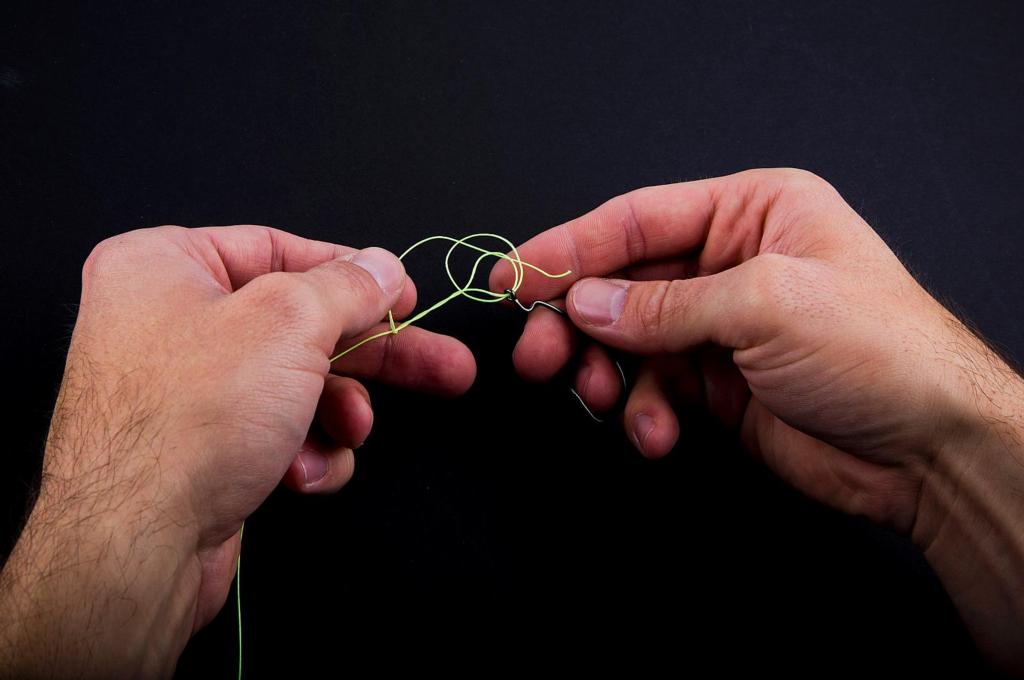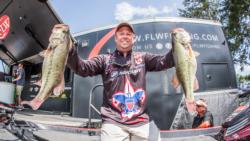5 Must-Have Knots
Tom Redington explains how to use five easy to tie knots.

Most anglers, pros included, look for any little edge to increase their catch, and that includes even the knots they tie to attach lures to their lines. With that in mind, picking the best knot to use with all of today’s lines can be a challenge.
Guiding customers for big bass on legendary Lake Fork for the past 10 years has provided a great laboratory for me to test a variety of knots in demanding conditions. Customers often bring their own gear, so I’ve tied knots on dozens of line brands and types. Lake Fork lunkers often reside in thick timber or heavy grass, yet heavy fishing pressure sometimes requires light line to trick these educated old fish. Through experimentation and experience, I’ve settled on a few knots that hold up to hard-pulling fish, even on light line.
Before I review the knots that I use and rely on, let me recount a few lessons that I’ve learned. For starters, no knot is very strong if it isn’t tied properly. Most knots aren’t very complex, but it does take a number of times practicing a new twist or wrap to be able to draw them together neatly and evenly. The more you tie a particular knot, the better you get at it, both in terms of the quality and the speed required to tie it. If you’re able to tie a knot really quickly, you’ll be more inclined to retie your lure should you notice a little nick or fray in the line. This will help you land a few extra fish in the long run. Therefore, I suggest you master a few knots, and, if you don’t tie one perfectly, cut it off and do it again.
Based on those principles, here are the line and connection types I use, with descriptions of the knots that I use with them most often:
Monofilament/Copolymer: It’s hard to beat the Palomar knot here. Super-quick and easy to tie, it consistently tests as the strongest knot for this line type. Life is complicated enough as it is; no sense overthinking this one.
Fluorocarbon: Fluoro is notorious for snapping on the hookset, so choosing the right knot for it is critical. I’ve experimented with a number of knots, but tying a uni-knot with the line doubled is the strongest that I’ve found. It’s hard to find instructions for this knot online, but you simply double up your line before threading it through the needle eye of the hook, then tie it like a regular uni-knot, leaving you with three tag ends to cut off. I go with seven wraps for 10-pound-test or less, six wraps for 12- to 17-pound test, and five wraps for 20-pound-test and heavier. Last I’d heard, this is the knot that Aaron Martens ties with fluoro. If it’s good enough for him, it’s good enough for me.
Braid: These lines are so slick, a lot of knots will slip and come undone under pressure. Again, the uni-knot works well here. I don’t double my line as I do with fluorocarbon, but I do wrap my line twice around the eye of the hook before starting my knot (thread your line through the eye of the hook once from the left and out the right side, then come back through the left side and out the right again before starting your knot). If tied properly to a stout hook, you’ll only wish the knot would fail with 50-pound-test or stronger when it’s snagged on the bottom. Pull up an oak tree or old Oldsmobile? Yes. Break? No.
Jigs: If you swim a jig through grass or flip weeds, you’ve probably tried a hundred jigs in an effort to discover the most weedless version. The problem is, most of us tie them to our line with a knot that has a big tag end standing out – a big weed catcher on the front of an otherwise weedless jig. For jigs in the grass, try a Trilene knot. It has a tag end that snugs up at the eye and points back toward the hook, keeping your knot (the leading point of your jig) weedless too. It’s strong and easy to tie with mono and fluoro.
Fluoro Leader-to-Braid: Most guys use a double uni-knot here, and it’s a good choice. I prefer the surgeon’s knot, however. It’s extremely easy and quick to tie, which lessens the ordeal of retying if I break off a rig in a tourney. Most knot guides show the surgeon’s knot being tied with two wraps, but I’ve found five wraps result in the strongest knot. A leader takes extra time to tie, plus the knot clicks through the guides and is an extra weak spot to fail should you hook a big fish. However, braid with a fluorocarbon leader is the best combo of strength, feel and stealth in a lot of situations. From 30-pound-test leaders on 65-pound-test braid to 6-pound-test leaders on 6-pound-test braid, the surgeon’s knot has been a steadfast connection for me.
Follow Tom’s fishing tips and updates at Facebook.com/TomRedingtonFishing and Twitter.com/Tom_Redington. For fishing articles and videos, check out his website, LakeForkGuideTrips.com.
